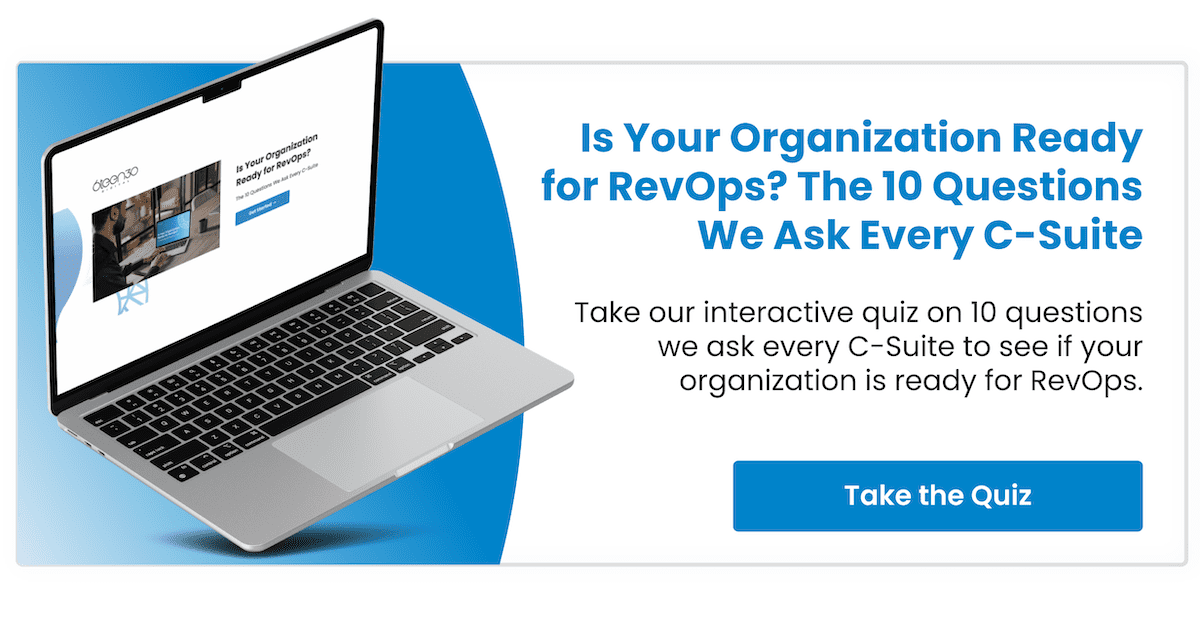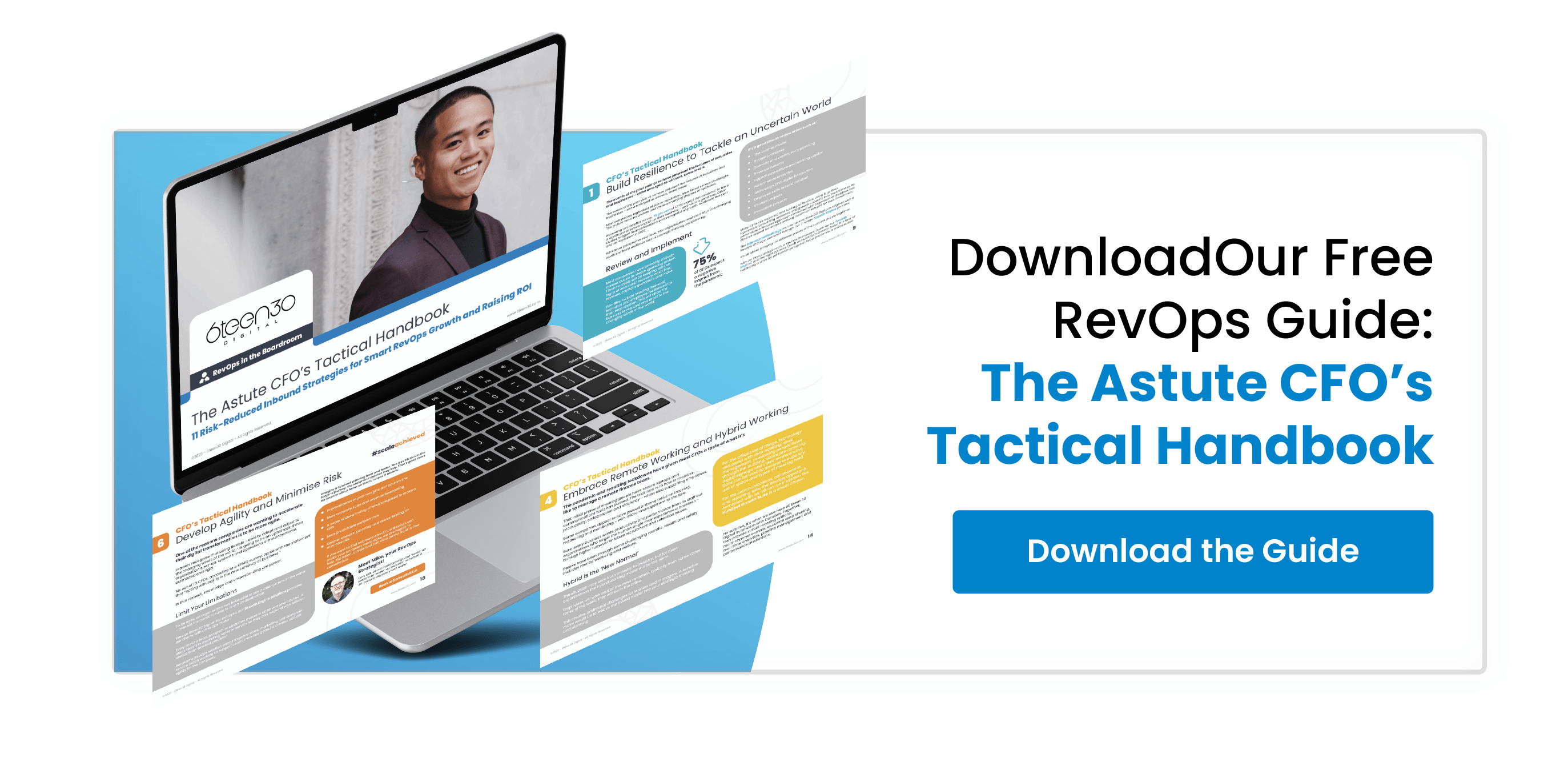
What a difference two years makes.
Who could have imagined the scale of the pandemic and its impact on lives, livelihoods, businesses and national economies?
The upheaval has created many challenges yet also presents opportunities for the conscientious CFO to demonstrate their strategic growth credentials.
The focus will be on how to create value for the organisation. More performance, productivity and profitable growth. More streamlining of the business to be more agile, flexible, tech-minded and appropriately skilled for the battles ahead.
Here are 11 prime, interconnected challenges facing the astute, growth-seeking CFO - and a pathway for meeting them.
The priority of these challenges will be different for each organisation and their situation.
1: Adapting to an Uncertain World
Uncertainty places additional stress on decisions around strategy, planning and implementation.
According to a Deloitte survey, three out of four CFOs expect the pandemic to have ‘significant’’ or ‘severe’ negative effects on their businesses during the year ahead.
It’s not just the uncertainty of what’s happening in your own country but also the uncertainty about what’s ahead for other countries around the world.
CFOs will be expected to demonstrate their strategic and organisational mettle.
Building Resilience and Results
The Wall Street Journal says finance chiefs are going to be keeping a close eye on indicators of economic recovery, working patterns, tax, regulation, cash and capital expenditure.
Today’s CFO will be under scrutiny for how they are able to juggle and show clear direction on priorities; build financial, technical and employee resilience into the organisation; and play a cross-function role in delivering results in conditions which remain volatile.
It will require a process of review, assessment and analysis of financial and other functions within the business. And it’s likely to stretch the creating problem-solving and innovation skills of the whole team.
2: Achieving Growth Whilst Controlling Finances
One thing recent events have taught us all is that we cannot control, or even predict, everything.
The best a CFO can do is to create flexibility, so the organisation can take a path yet be able to respond to any change in conditions.
Survival is not seen as enough. In contrast to Deloitte’s findings, Forbes says recent surveys indicate that CFOs are gearing up for growth, modest in 2021 and accelerating in 2022.
Covering Matters Across the Board
CFOs will want to avoid stagnation and position their organisations for improving performance as the economy rebounds.
They will be involved across all phases of growth. This includes customer acquisition, new initiatives in the marketplace, potential mergers and acquisitions, and restructuring the workforce.
Investments in team and technology will need to be balanced with the need to stay lean and efficient.
A spending review is a way to get a clear idea of the current picture and identify areas for action. For some organisations, a switch to zero-based budgeting may help to maintain fiscal balance.
3: Securing Alignment of Stakeholders
Investment in teams and technology - to build resiliency, agility and efficiency into the organisation - is not enough to deliver higher performance.
It takes everyone, pulling together in the same direction, to achieve results and scalable, sustainable growth.
The challenge falls into two parts.
At the higher level, the task is to collaborate better with C-suite colleagues. When the leadership can work in closer alignment, the CFO is better able to bring the rest of the organisation together as one.
A good opportunity to review and re-evaluate brand values, vision, mission and goals.
A More Holistic Approach
When alignment is built into strategic thinking, it can pull together marketing, sales and customer service teams.
Improved communications and collaboration can help to shorten the sales cycle, give the customer a better - and higher value - experience, and drive performance across divisions.
Streamlining of processes and smarter data-sharing pave the road to improve efficiency, boost productivity and create space for innovation and fresher approaches.
Closer collaboration between CFOs and CIOs can help leaders see what technology is out there - and how it can support the finance and other functions of the organisation - and improve data levels. Better conversations with the CRO will also help the CFO to forecast and budget growth correctly.
4: Managing a Remote Finance Team
Managing a remote team can be a daunting prospect, especially if it’s something relatively new to you or the right technology is not in place.
Global lockdowns have given many organisations an accelerated taster of the experience. The transition towards a hybrid model - with employees working partly from home, partly back in the office - adds extra layers of complexity.
No wonder that CFOs and colleagues are exploring cloud-based solutions. They want technology to enable their finance team to do their job properly and to access the information they need wherever they are. They need technology to track performance and analyse data.
Hybrid, Cyber Security and Empathy
Hybrid working is here to stay.
Cisco research suggests 98 per cent of future meetings are likely to have at least one attendee participating remotely.
CFOs will want their team (and employees in the wider organisation) to be supported with the tech side, and the health and wellbeing side. Conversations about that sure to be had with the CIO and COO, among others.
Businesses will also want to keep a firm grip on cyber security, with policies and training to keep things safe across the company.
Alongside the efficiency, there also needs to be empathy. Leaders and employees have been put through a lot in the past 18 months. The impact on individuals is not always obvious to the eye.
5: Adopting Digital Transformation
For some organisations and CFOs, this is the number one challenge.
Many companies are still operating with an unhealthy mix of software platforms, outdated systems and unused (or under used) technology.
This tech ‘Spaghetti Junction’ creates congestion and jams in the running of not just the finance function - but also marketing, sales and customer service.
It hinders individual productivity, makes it harder for teams to share information and collaborate, and risks making decisions without the correct and most up-to-date data.
Get Ready to Press the Accelerator
According to Gartner, 69 per cent of board leaders expect to accelerate digital transformation.
Many CFOs will see setting up the right cloud-based applications as a top priority over the next 12 months. Control, security and visibility are required - especially with remote working remaining to the fore.
Instead of manual data entry and siloed information, teams will have data that is up-to-date, accurate and auditable. Leaders will be able to measure the effectiveness of each component of the business.
Expect to hear much more of terms like data analytics, workflow automation, chatbots, AI, machine learning and automated management reporting.
According to Accenture’s Finance 2020 report, automation will eliminate up to 40 per cent of the transactional accounting work the finance department does today.
6: Creating an Agile Organisation
Digital transformation is at the heart of becoming a more agile organisation.
And if there was one lesson from the past year or so for businesses, it is that you cannot sit still or stick your head in the sand.
The pandemic has been no respecter of brands. Some big names have disappeared from the High Streets and malls around the world.
In the UK, big names like Marks & Spencer and John Lewis are closing stores. Debenhams, Oasis and Warehouse have already fallen by the wayside.
In the USA, brands to have fallen victim to the pandemic-induced economy include gourmet food retailer Dean & Deluca, CMX Cinemas, clothing company J Crew, department store retailer Neiman Marcus, gym chain 24 Hour Fitness and Hertz Corporation, probably best known for its car rental services.
Nobody Wants to Join That List in a Hurry
In a KPMG survey, 59 per cent of CFOs agreed that ‘acting with agility is the new currency of business.’
There needs to be a Plan A and a Plan B (maybe even a Plan C).
Organisations may look to pivot their operations, streamline their processes and upgrade their systems as part of their revised strategy.
Recognising the limitations of old-fashioned platforms and understanding the solutions new technology can provide for their teams, is critical for agility.
However, technology is only as good as the people using it. Budgets may have to take account of any additional training and support required.
Some companies may also want to encourage and promote greater diversity in the workforce. The more diverse your employee make-up, the wider the range of skills, cultural perspectives and insights you will have. This may lead to better problem solving and faster decisions.
7: Backing the Right Business Model and Budget Process
The pandemic forced businesses in many industries or sectors to re-evaluate or adapt their business model.
This was particularly the case in retail, where the acceleration of customers towards online shopping was like putting your foot to the floor of a Tesla Model S.
In the hospitality sector, restaurants and cafes were not able to invite customers inside their doors but they could offer take-out and delivery services.
People couldn’t go to the gym but they could ‘join the Peloton’ - or take advantage of other home fitness equipment, and streamed health and fitness sessions.
Car journeys were banned or restricted. But sales of bicycles rocketed. Many bicycle manufacturers - like Brompton - and cycle shops, small or large, simply ran out of stock.
Making a Recovery, Taking Opportunities
Traditional models may need to be modernised, adapted or - in some cases - ditched.
The challenge is to find strategies that will deliver growth. For some, the objective is strong recovery. For others, it will be to take advantage of favourable conditions in their sector or market.
Organisations may be looking at cost reduction, employee engagement and retention, raising employee performance, restructuring the business or portfolio, and how to generate more working capital.
Another approach to achieving higher value could be to change the budgeting process. According to its research, McKinsey says CFOs recognise that the business-as-usual model is “no longer fit for the task”.
Its survey revealed 43 per cent of CFOs saw a need to streamline budgeting processes, to be more agile. Almost two-thirds of financial leaders expected greater use of rolling forecasts in 2021 and beyond.
8: Having Robust Contingency Plans in Place
Research suggests two-thirds of financial planning and analysis leaders expect to be doing more scenario planning.
Rather than swinging a metaphorical machete blindly through the finances, more adventurous CFOs are exploring the money jungle to see how various ‘What if?’ stories may unfold.
Scenarios, assumptions and decisions made during the global pandemic can be stress-tested.
It’s also an opportunity to review internal processes. Look for weak links in the supply chain, cash flow, customer base and customer payments. Seek the opportunities in new markets, fresh segments of your audience and the digitalisation of the business.
Agile Funding
However optimistic leaders are about the future, there remains uncertainty.
The astute CFO may want the organisation to hold back a little for contingencies and be more agile with funding, ready to adapt to an ever-changing economic, market and buyer picture.
That way, if scenario X, Y or Z occurs, the business has a plan to respond.
As part of the review, CFOs would be well advised to look at decision-making. Explore how it could help speed up processes and demonstrate a stricter approach to cost benefit analysis.
9: Measuring Meaningful ROI on Investment
World events have put even greater business focus on that balance between performance and efficiency.
Executives around C-suite tables are asking themselves: “How do we achieve more yet stay lean?”
The wise CFO will have a firm eye on ROI, to ensure that money is being put to best use and delivering value to the bottom line.
Not so easy to do that if you do not have the means to track, monitor and analyse what’s happening in the business. That’s where data is needed. Accurate, up-to-date and relevant information.
Welcome to the Data-driven Future
Data has always been important for the CFO, to answer fundamental questions.
How much do things cost? Why is marketing spending so much? Why is the sales division not selling as well as expected? What’s the churn rate and why is the service section not looking after our customers?
When you have technology that can track activity and map that activity to results, you can begin to measure ROI in a more meaningful way. Not just a management information system or dashboard but scenario analysis, financial modelling, complex data mining to uncover trends or patterns, cash flow predictions and buyer behaviour.
It can help to inform strategy and operations in finance, marketing, sales, customer service.
According to Forbes, those companies that made long-term technology investments last year - as part of their digital transformation - are likely to see the rewards this year and beyond.
10: Getting Business Case Decision-Making Right
Every company wants any investment they make to be a good one.
Even more so if the amounts involved are sizeable. The wrong choice could prove expensive or irretrievable.
Projects may involve innovation, business ventures, factory relocations, IT investments, or new products and services.
The astute CFO will want to do his or her homework - and present or ask for a business case. It’s important to get sharp clarity about the opportunities, outcomes, stages, timings, resources and alternatives.
What may appear obvious advantages and benefits of a project to one leader may not be so clear to colleagues.
Asking the Questions
Putting together a business case is presenting the justification for going ahead with an investment - and demonstrating the potential value to the company.
It asks (and answers) key questions, such as:
-
Which option(s) should we invest in for maximum value to the company?
-
Are other alternatives more profitable?
-
What benefits will going ahead bring?
-
Can the proposal be implemented as planned?
-
Is it realistic to deliver it to the timescale and budget laid out?
-
Strategically, is this the best approach for us to take?
-
Given all we know, should the company consider investing in this at all?
When you have access to data, analytics and performance prediction tools, making the case will be easier.
11: Adapting to the Changing CFO Role
The CFO has often been labelled “the CEO’s number two” - the right-hand man (or woman).
However, global events have accelerated his or her increasing role.
Research by the Association of Chartered Certified Accountants (ACCA) and the Institute of Management Accountants (IMA) appears to support that view. Some 72 per cent of members questioned felt the role of the CFO will “increase or increase significantly” in importance over the next three to five years.
It’s not simply about the numbers.
An Arm Around the Whole Organisation
Today’s CFO must manage their finance team, under the remote working and hybrid model, yet also have a strategic overview of organisation-wide performance.
They must embrace new digital technologies, find and keep skilled financial and analytical talent, and explore ways for the business to innovate.
With their unique perspective, CFOs may well find themselves taking a more prominent leadership role - helping to drive and prepare for change. They might become the chief architect of collaboration across divisions, departments or teams.
They will also be expected to play their part in developing or rebuilding organisational culture, promoting diversity and raising the company’s ‘green’ credentials.
Revenue Operations - The Rising Star
Faced with these significant challenges, it is little surprise that many CFOs are turning to Revenue Operations, also known as RevOps or RO.
This approach aligns sales, marketing and customer service operations across the complete customer life cycle to drive growth.
Shared revenue targets mean all teams are accountable to revenue, not just sales. Shared data means teams can work together better for the greater good and the company better predict performance. Synchronised activity increases operational efficiency. That all has a positive impact on the finances.
RevOps has been described as building the tracks and keeping the trains running on time.
The biggest challenges to implementation are typically company resources, inconsistent data and disconnected systems. It’s why organisations often reach for outside support to make it all happen.
Here at 6teen30 Digital, we use Revenue Operations to help clients align their marketing, sales and customer service teams. Our strategic GamePlan Workshop process combined with the HubSpot Growth Suite delivers a customised RevOps solution.
Statistics suggest the investment is worth exploring.
HubSpot research says companies with aligned departments close 38 per cent more deals and post 208 per cent more marketing revenue. A study by SiriusDecisions found public companies using RevOps saw 71 per cent higher stock performance.
If RO is delivering ROI in those kinds of numbers, it’s little wonder more and more CFOs and C-suites are exploring its possibilities.
To explore RevOps solutions from 6teen30 Digital, you can view our RevOps Journey path.
Turning Challenges into Opportunities
Few would be surprised if today’s growth-minded CFO was feeling the pressure.
The everyday challenges are stacked with those created by the global pandemic and its impact on the economy. Balancing high-value performance with efficiency has become a complex juggling act.
As uncertainty lingers, companies can expect more change in the years ahead.
Key challenges revolve around achieving growth, making the numbers add up, leading digital transformation, developing business agility and having the right people and skills to deliver on goals.
The focus is turning to improving collaborative systems, and finding accurate and reliable data to drive decisions for performance and growth.
To discover more about how to use inbound strategies for successful RevOps growth, 6teen30 Digital has produced a free guide, called The Astute CFO’s Tactical Handbook.








%20-%20Teal.png?width=500&height=130&name=Force%20%26%20Friction%20-%20Branding%20-%20Logo%20(White)%20-%20Teal.png)